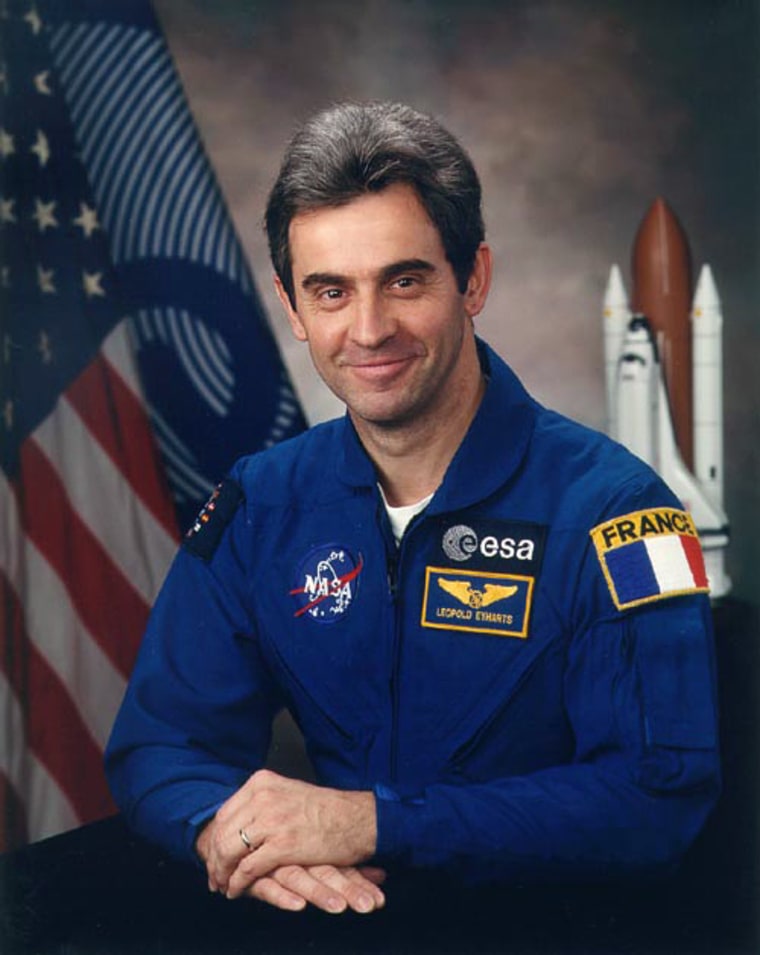When NASA ferries Europe's Columbus scientific research module to the International Space Station next year it may send along a Frenchman to operate it as well.
If the plan is approved, French astronaut Leopold Eyharts would likely would get the nod to begin a series of two- to 2-1/2-month station expedition missions by astronauts from NASA's partner countries, European Space Agency astronaut Hans Schlegel said in an interview.
Schlegel, a veteran of a 1993 space shuttle research mission, is one of six crew members assigned to a shuttle flight slated for launch in October 2007, to deliver and install Columbus, the European Space Agency's primary contribution to the International Space Station program.
"It's under investigation that we have a seventh crew member," the German-born Schlegel said. "This is most likely to be Leopold Eyharts, a French astronaut."
The idea, supported by international partners of the U.S. space agency, is that Eyharts would remain aboard the space station for up to 2-1/2 months and focus on "activating, checking out and starting" experiments on the Columbus module.
Slideshow 12 photos
Month in Space: January 2014
Eyharts would be the second European to serve as a resident crew member on the station. Germany's Thomas Reiter arrived on the orbiting outpost in July for a six-month mission. He was joined last month by U.S. astronaut Michael Lopez-Alegria and Russia's Mikhail Tyurin, who are scheduled to serve until next spring.
Reiter's replacement, NASA astronaut Sunita Williams, will arrive with the next shuttle crew, now scheduled for launch on Dec. 7.
NASA spokeswoman Melissa Matthews said several proposals are being negotiated to give partner countries earlier flight opportunities aboard the space station but declined to comment on any specific plans.
Schlegel said a Japanese astronaut and then a Canadian would fly after the European, with all three mini-expeditions substituting for one, U.S.-allotted full-time, six-month station assignment.
NASA last month resumed construction of the station after nearly a four-year hiatus triggered by the 2003 Columbia accident. Before European and then Japanese laboratories can be flown, the United States must finish building the station's truss, rewire and expand its electrical system and add a connecting node to anchor the new modules to the station.
Europe's microgravity research program includes biology, fluid physics and materials science experiments as well as basic science. The United States has curtailed science investigations aboard its Destiny laboratory module, limiting them to programs that directly support the country's planned lunar expeditions.
Eventually, the station, which orbits about 225 miles above the planet, is expected to support six, full-time live-aboard crew members.

